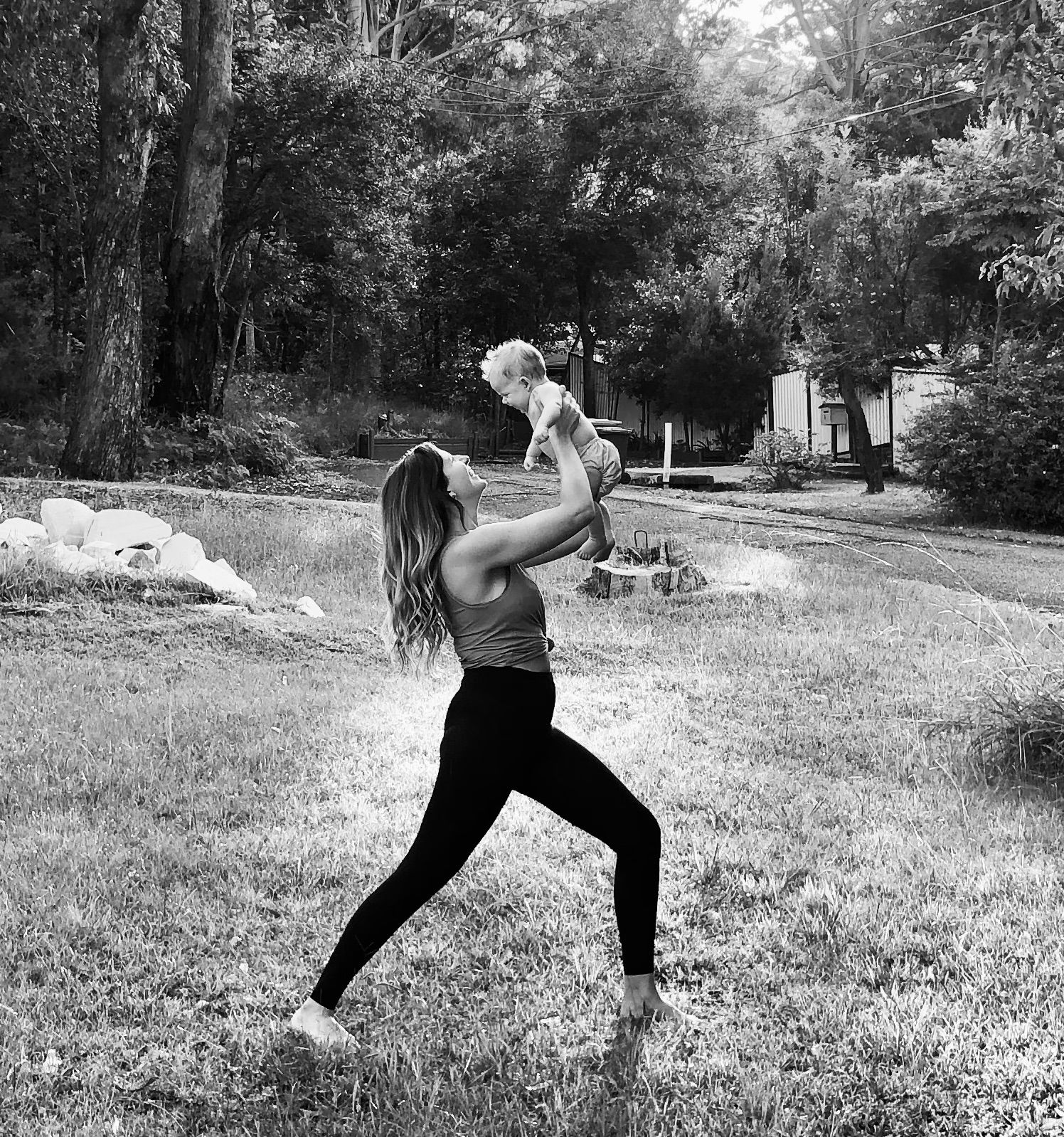Transition to Springtime with Yoga & Ayurveda
Welcome the Spring season with some conscious tweaks to your routines, practices and self-care to optimise health and spirit.
Yoga and its sister-science ayurveda teach us how our lifestyle choices can help us live in better harmony with ourselves and with the world around us. Amongst the benefits are that we feel balanced, at ease and more resilient, with strong mental, immune and digestive function.
You may notice yourself intuitively altering some lifestyle choices as the weather warms. Acknowledge where you are already tuning into the earth’s changing conditions, and consider some easy and straightforward ideas that you may not yet be trying out.
It’s important to recall that what is right for one person may not be as effective or right for another (or may even be detrimental). You likely know this already from your yoga practice, and the same principle is certainly true through an ayurvedic lifestyle lens. As with a new yoga posture, gently feel your way with any new self-care techniques and lifestyle practices, and observe the effect on your individual body and mind. How does it make you feel?
What is Going on as The Seasons Change?
In Ayurveda and Yoga, the human body is a microcosm of the planetary and cosmic environment. If we imagine snow melting and the flowing water meeting the earth, this is representative of the microcosm too, as the cold stillness of winter gives way to increased movement and warmth, and the energising of winter’s stagnation.
While the cold weather months are suited to slowing down, taking extra rest, re-grounding ourselves with warm, heavy foods and learning to enjoy more quiet time in our own company, Springtime calls us to begin to shake off winter’s stagnation, re-stimulate our bodies, re-energise our social connections, and letting the warmer weather influence our food and movement.
For those already familiar with some of the principles of ayurveda, Springtime is associated with the Kapha dosha, the dominance of the water and earth elements. Humans and indeed everything in the universe are comprised of a combination of the 5 elements, the building blocks of Nature: earth, water, fire, air and space. The varying ratios of each element in each of us determines one of three energetic bodily humours, called doshas.
Air + Space = Vata Dosha
Fire + Water = Pitta Dosha
Water + Earth = Kapha Dosha
Most people will typically have one or two dominant doshas, some are tridoshic.
Our doshas influence our behaviours, anatomy & physiology, tolerances, tendancies, likes & dislikes, and so on. (Our most dominant dosha(s) is typically the first one to be knocked out of balance as life’s circumstances toss us around like a leaf in a stream, or simply lack of appropriate self-care. So our dominant dosha needs particular care to be placated).
But doshic influence can also be seen in seasons, times of the day, and the three major trimesters of our lives. The three doshas can also influence certain areas and organs of the body. (The Kapha dosha is mainly dominant in the upper body, such as the chest, stomach, heart, throat, sinuses).
Simply put, even if your particular inborne elemental constitution (known as prakruti) is something other than a Kapha dominance, the seasonal change to the Kapha-dominated Springtime may mean any of us can benefit from some Kapha-placating choices.
For our purposes here, all you really need be aware of here is that Springtime can be a great time to change up your routines and practices and choose some appropriate energising, cleansing and stimulating practices.
Spring brings new growth of plants and the arrival of many baby animals. So, just as your intuition has likely suggested to you, it’s a great time for ‘new-ness’! New things in your daily routine, a change-up to your physical workout, a fresh look at your food intake and the re-energisation of some social circles.
Imagine that melting ice once again. As it reaches the earth, there’s a sense of lubrication and juiciness, and when things are in balance, this flow represents the removal of accumulated Kapha. But the union of water and earth also creates mud – associated with heaviness, stickiness and congestion. In our human body microcosm, we may well feel a little lethargic at the start of Spring, or encounter increased mucous and other respiratory issues. Recall that Kapha sits in our upper body area.
Below are some suggestions to experiment with to help you ease into the new season and use the surrounding re-entry of moisture, movement, softness and re-birth to our advantage.
Movement – Open Your Heart & Shake It Up!
Just as animals awaken from hibernation and begin to stretch and wriggle before they attempt to run, your body may not feel ready to launch straight into very vigorous and athletic forms of yoga (and other movement) if that’s not been part of your winter routine, without some gentle transitioning. (And remember, when we also take into account how we feel mentally and emotionally, there is always a place for slow and gentle movement, and conscious rest, in any season).
While winter is about enjoying routines, Springtime invites us to experiment more and change things up. If you haven’t been doing any physical movement in the morning during the colder months, consider changing up your daily routine in Spring with some morning movement. The sun is now rising earlier so if we tweak our waking time to be a little earlier – in line with nature’s movements – many of us can find ample time to play with some physical movement before we start the rest of our day.
And while we’ve all likely been indoors quite a bit in recent months, the warmer weather may call to you to try some physical movement outdoors, enjoying the explosion of colour happening around us, the new floral perfumes in the air, and safely topping up on vitamin D levels from Father Sun. Being outdoors allows us to truly notice how nature responds to the change of seasons. In doing so, we are using mindfulness to train ourselves to be more present with the here and now.
Consider physical movement that activates your circulatory system (perhaps like brisk walking, hiking, cycling or swimming) and makes your feel energised and positive (perhaps like dancing).
In the asana portion of your yoga practice, consider including:
- Sun Salutations: Great for getting stagnant energy moving, and can help your mood feel uplifted
- Backbends & Heart-Openers: Can give space and freedom to the chest and lungs, and move congestion. Imagine yourself uncurling from hunched ball (similar to the hunched posture we tend to adopt in cold weather) into chest-opening expansion. Like a Springtime flower!
You can try Dhanurasana (Bow Pose), Salabhasana (Locust Pose), Ustrasana (Camel), Bhujangasana (Cobra) and Viparita Virabhadrasana (Reverse Warrior). - Inversions: Postures such as Sarvangasana (Shoulder-Stand) can stimulate circulation and drain the nasal passages.
As with all postures, some may not be accessible or appropriate for everyone. If you have a known condition (such as back, neck or eye issues, or blood pressure issues, or are currently pregnant) your yoga teacher can offer you modifications or alternatives that allow you to practice in safety, and with the appropriate balance of challenge and comfort.
Pranayama – Move That Energy Into Spring Clean Mode!
‘Spring clean’ doesn’t just refer to your house. It’s the season to clear your human home. Breathwork is a powerful way to remove toxins. Your unconscious breathing is designed to remove around three quarters of your body’s toxins. Conscious breathing practices direct the life-force (prana) to areas of our body, stimulating the body’s organs and systems and allowing them to do their jobs more effectively. As a bonus, conscious breathwork can down-regulate our stress (and therefore inflammatory) response, soothing the over-active immune system that contributes to allergy conditions such as hayfever.
Kapalabhati (Skull Shining Breath) is an active exhalation as your contract the lower belly and a passive inhalation as lower belly muscles are relaxed. It works the trunk of the body where Kapha resides. It stimulates circulation and energises.
Kapalabhati may not suit those with heart and blood pressure conditions, during pregnancy, or if it causes you to feel more anxious.
Bhastrika (Bellows Breath) is an active and forceful exhalation and inhalation, generally linked to arm movements up and down in a pumping fashion. Bhastrika is energising, clears nasal passages, strengthens the abdominal muscles, and removes excess phlegm.
Bhastrika may not suit individuals with blood pressure issues, pregnant or menstruating women, those who suffer nosebleeds easily, and as always, if it causes you to feel more anxious.
Breathing can also feel easier with Nadi Shodhana (Alternate Nostril Breathing) for issues in the nasal passages, and Brahmari (Bee Breath) for issues at the back of the throat.
Food – Lighten Up and Go Seasonal!
Your intuition is likely already giving you some guidance in this area. Just as we tend to seek out heavy, warming foods like stews and roasts in winter, warmer weather will generally influence our choices more towards lighter foods and smaller portions. You may also notice feeling more drawn to foods with high water content, such as salads and juicy fruits. This is your body helping you to eat seasonally and stay hydrated, so go ahead and place a hand on your abdomen and your heart, and give your body some thanks and gratitude!
Some people will lean towards a ‘cleanse’ at this time of year, but this is a very personal choice and should be well-researched or better yet, under the guidance of an ayurvedic practitioner or qualified nutritionist or naturopath, especially if your cultural conditioning associates the word ‘cleanse’ with starving yourself or otherwise trying to bully your body to your will.
It should be noted that an Ayurvedic cleanse does not entail severe calorie restriction, extended periods or other fad-like approaches that over time can lead to nutritional inadequacy, hormone disruption or an unhealthy relationship with food intake.
In a yogic lifestyle, we honour the body, we do not seek to punish it.
We are seeking ways to allow the body to do what it already knows how to do, more effectively. We are not looking for ways to beat our precious body into any kind of submission, or bend it to our will such as for aesthetic change. (The learned yogi recognises that vanity stems from an over-association with our ego, one of the core causes of human suffering – known as kleshas – and neglecting to regulate this tendency will take us further away from true contentment).
Through yoga and ayurveda, we simply get out of of our own way to vibrant good health, with practices that allow it to return to its natural state of physical homeostasis and mental & emotional balance.
Trust that your body knows how do all of its amazing functions that it does for you, each and every second of the day. Our appropriate lifestyle choices help us ‘get out of our own way’ so the body can best do its incredible work. For some this may mean reducing digestive efforts for a time. It may mean a cleanse, or it may simply be a practice of reconnecting with your body’s signals for food, rather than eating by a clock. Most of us live like grazing animals in a modern, busy world, consuming food whenever it is in reach, unconscious eating while doing other tasks, or eating regularly by the time of day because it suits our schedule, rather than tuning in to what our body tells us it needs on a given day.
Individuals with a known Kapha dominance may well find short cleanses or fasts helpful to lift an energetic heaviness. A ‘mono-diet’ is a period of time on a very simple food intake plan, to make things easy on our digestive system and give our body a chance to do more of its other jobs such as important cellular repair and rejuvenation.
In ayurveda, a cleanse generally means just a few days on an easily digestible dish such as kitchari (or kitcheree), a delicious dish comprised mainly of lentils, rice, spices and some vegetables, together with a small portion of health-giving fats such as ghee or coconut. Through a western lens, this simple dish provides a wonderfully balanced meal of the 3 major macronutrients: carbohydrates, protein and fats, yet is easy on our digestive system.
The effort our bodies usually need to digest our food can then be re-directed to other functions.
The Spring season may simply mean reducing deep-friend, sugary and dairy products which can all aggravate Kapha, and lead to increased congestion, and increasing water and seasonal fruit and vegetables.
Pay attention to the different fruits and vegetables that cycle into season throughout the year and select seasonal produce. You can access help here.
Kapha-reducing foods in particular include produce with pungent and bitter tastes. For example: leafy greens (such as broccoli, cabbage, spinach) apples, lemons & limes, legumes, cherries, pomegranate, and digestive spices such as black pepper and ginger.
Other Self-Care Top Tips – Let Those Cells Know They’re Loved!
Self-Massage – Known as abhyanga, self-massage is beneficial for all individuals of any constitution*, in any season. By virtue of the fact it is self-massage (not massage performed by someone else) it sends a strong message to our cellular and energetic selves about valuing ourselves and prioritising our own wellbeing.
Amongst its many other benefits are that it increases circulation, aids lymphatic drainage, relieves fatigue and stress, tones muscles, soothes joints, calms the nervous system and promotes better sleep. Whew! No wonder so many ayurvedic experts call it their absolute non-negotiable daily self-care practice!
Abhyanga is generally performed in long strokes, toward the heart and lung area, encouraging blood and lymph to travel to where it can be ‘cleaned’. It also traditionally includes a foot massage as the finishing touch to ground and calm us – yes, please!
We can tweak self-massage to suit our needs with the application of different oils. For example:
Pitta (requiring cooling) Coconut or Olive oil
Vata (requiring warming & lubrication) Sesame or Avocado oil
Kapha (requiring circulation boosters): Mustard seed oil
*Except when recovering from surgery or major illness, and during menstruation. Abhyanga is traditionally performed in a very stimulating fashion , all over the body, so not suitable during pregnancy either, however alternative gentler forms of touch therapy can be beneficial during pregnancy; speak to your doctor to sound out what kind for massage, if any, feels right for you during pregnancy.
Nasal Rinsing – Known as Jala neti, nasal irrigation can go right to the heart of resolving some of Spring’s irritants, by cleaning out the sinus passageways of bacteria, pollutants and allergans. It is performed using a neti pot, which resembles a small teapot, to direct water in one nostril and allow it to flush out the other, and is done ideally in the morning.
Nasal rinsing is generally done with a saline solution to increase anti-bacterial properties, but some people prefer water alone to prevent risk of accidentally over-drying the fragile mucous membranes with salt over-use.
NB: Jala neti is distinct from its cousin, nasya, which is nasal irrigation performed with oil instead of water, and just as oil and water don’t play well together, jala neti and nasya are ideally done on different days if you are going to try both.
Curious to learn your Ayurvedic dosha so you can zero-in more precisely on lifestyle food and self-care tips best suited for you? Take a Dosha Quiz here.

We hope the Springtime is a time of curiosity, positivity and wellbeing for you. Ancient Wisdom, Modern Living!
Written by Nicole Small, The Yoga Institute
Learn more about:




































